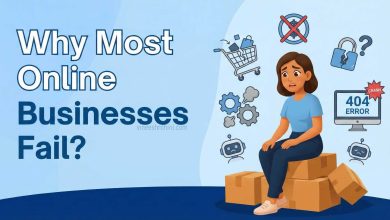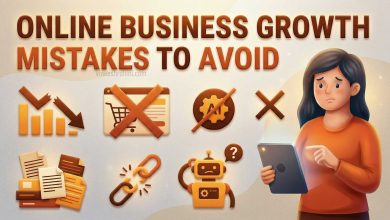Optimizing Product Pages for Higher Conversions
In the competitive world of e-commerce, having a well-optimized product page is crucial for driving higher conversions and maximizing sales. A product page serves as the virtual storefront for online businesses, and optimizing it effectively can significantly impact customer engagement, trust, and ultimately, conversions. In this essay, we will explore the key strategies and best practices for optimizing product pages to achieve higher conversion rates.
I. Understanding the Importance of Product Page Optimization:
- The Role of Product Pages: Product pages play a vital role in the customer’s purchasing journey. They provide essential information about the product, showcase its features and benefits, and influence the customer’s buying decision. Optimizing these pages can enhance the user experience, build trust, and encourage visitors to take action.
- Impact on Conversions: An optimized product page has the potential to increase conversions by improving clarity, reducing friction, and addressing customer concerns. By implementing effective optimization strategies, businesses can boost sales, increase customer satisfaction, and ultimately drive revenue growth.
II. Key Elements of a High-Converting Product Page:
- Compelling Product Descriptions: Clear, concise, and persuasive product descriptions are essential to engage potential customers. Descriptions should highlight the product’s unique features, benefits, and value proposition, effectively communicating why it is the best choice for the customer.
- High-Quality Product Images and Videos: Visual elements are critical in capturing the attention of customers. High-resolution product images and videos from multiple angles can provide a better understanding of the product’s appearance, functionality, and quality. Incorporating zoom features or interactive elements further enhances the user experience.
- Clear Call-to-Action (CTA): A prominent and well-designed CTA guides customers towards making a purchase. It should be visually appealing, prominently displayed, and use compelling language to encourage immediate action. Effective CTAs can include phrases like “Buy Now,” “Add to Cart,” or “Get Started.”
- Social Proof and Reviews: Including customer testimonials, ratings, and reviews on product pages builds trust and credibility. Positive social proof instills confidence in potential buyers and reassures them of the product’s quality and reliability.
- Pricing and Promotions: Transparent pricing information, discounts, and special offers should be clearly displayed. Utilizing scarcity tactics, such as limited-time promotions or low stock notifications, can create a sense of urgency and drive conversions.
III. Best Practices for Product Page Optimization:
- Streamline Page Design and Navigation: A clutter-free and intuitive page layout enhances the user experience and improves navigation. Use a visually appealing design, logical product categorization, and easy-to-understand menu options to help visitors find the information they need quickly.
- Mobile Responsiveness: With the increasing use of mobile devices for online shopping, ensuring product pages are optimized for mobile viewing is crucial. Responsive design, fast loading times, and simplified navigation on smaller screens are essential for delivering a seamless mobile shopping experience.
- Search Engine Optimization (SEO): Implementing relevant keywords, optimizing meta tags, and incorporating descriptive URLs can improve product page visibility in search engine results. Well-optimized product pages increase organic traffic, attract qualified leads, and contribute to higher conversions.
- Personalization and Customization: Tailoring product pages based on user preferences and behavior can enhance the overall shopping experience. Implementing personalized recommendations, related products, or dynamic content based on browsing history or purchase patterns can significantly increase engagement and drive conversions.
- A/B Testing and Data Analysis: Continuously testing different elements of product pages, such as layout, color schemes, CTA placement, or product positioning, allows businesses to identify the most effective strategies. Data analysis, including metrics like bounce rate, time on page, and conversion rates, provides valuable insights for ongoing optimization.
- Optimize Loading Speed: Slow-loading product pages can lead to higher bounce rates and lower conversions. Optimizing image sizes, minimizing the use of unnecessary scripts or plugins, and leveraging caching techniques can significantly improve page loading speed, ensuring a smooth and seamless user experience.
- Clear and Detailed Product Information: Providing comprehensive and accurate product information is essential for building trust and reducing customer hesitation. Include details such as product dimensions, specifications, materials, care instructions, and warranty information. The more information you provide, the more confident customers will be in their purchasing decisions.
- Highlight Key Features and Benefits: Clearly showcase the unique selling points and benefits of the product. Use bullet points or visual elements to draw attention to the most important features. Highlight how the product solves a problem or fulfills a specific need, emphasizing the value it brings to the customer.
- Use High-Quality Product Images and Videos: Visual content has a significant impact on customer engagement and conversions. Ensure that product images are of high resolution, show the product from multiple angles, and accurately represent its colors and textures. Including videos that demonstrate the product in action or provide tutorials can further enhance the customer’s understanding and confidence.
- Seamless Checkout Process: An optimized product page should seamlessly transition into a user-friendly and secure checkout process. Minimize the number of steps required to complete a purchase, provide clear instructions, and offer various payment options to accommodate different customer preferences.
- Trust Signals and Security: Display trust signals, such as secure payment badges, SSL certificates, and recognized security seals, to instill confidence in customers. Clearly communicate your privacy policy and any guarantees or warranties associated with the product. Building trust is crucial for overcoming customer concerns and increasing conversions.
- Social Sharing and Customer Engagement: Incorporate social sharing buttons and encourage customers to share their purchases or experiences on social media. Implementing customer reviews, ratings, and testimonials can also boost trust and create a sense of community around your products.
Conclusion
Optimizing product pages for higher conversions is a critical aspect of e-commerce success. By implementing the strategies and best practices outlined in this essay, businesses can create engaging, user-friendly, and persuasive product pages that drive customer engagement and increase conversions. From compelling product descriptions and high-quality visuals to streamlined navigation and personalized experiences, every element of a product page should work harmoniously to build trust, showcase value, and guide customers toward making a purchase. Continuous



